The Library of Consciousness
of Consciousness

The truth of relationship, the truth of a harmony in the universe, the fundamental principle of creation. It is not merely the number of protons and electrons which represents the truth of an element; it is the mystery of their relationship which cannot be analysed.
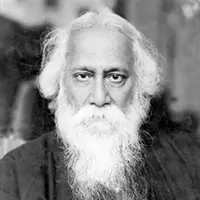
1922

Emergence refers to the arising of novel and coherent structures, patterns, and properties during the process of self-organization in complex systems. It describes how complex systems and patterns arise out of multiplicity of relatively simpler and randomized interactions.
Some examples of emergent properties include the complex symmetrical patterns created by starling murmurations in flight, the coherent colony structures created by social insects like ants and termites, the patterns of traffic jams arising from individuals’ driving behaviors, and even consciousness emerging from neural networks in a brain. What defines emergent phenomena is that the macro-level patterns are not directed or controlled by a central authority. Instead, they are decentralized systems where local interactions between components lead to self-organized macro-level complexity. While the interactions between lower-level components may follow simple rules, the collective outcome transcends these rules to yield novel and surprising results. The key to emergent phenomena is understanding how micro-level behaviors link to generate new macro outcomes. It reveals how parts connect into wholes, aiding our understanding of countless complex systems from cities to minds.

A Clarification
Reflections on Two Converse Forms of Spirit
Teilhard de Chardin identifies two distinct spiritual paths: unity through “relaxation” (Eastern pantheism) where individual egos dissolve into a common foundation, and unity through “tension” (Western mysticism) where individuals become more themselves while converging toward a universal center. He argues that cosmic evolution favors the latter path, where true union differentiates rather than fuses, and calls for a new Western mysticism that combines personalizing love with cosmic totalization.

A Declaration of the Independence of Cyberspace
A widely distributed early paper on the applicability (or lack thereof) of government on the rapidly growing Internet. Commissioned for the pioneering Internet project 24 Hours in Cyberspace, it was written by John Perry Barlow, a founder of the Electronic Frontier Foundation, and published online. It was written primarily in response to the passing into law of the Telecommunications Act of 1996 in the United States. The audio recording of Barlow reading the Declaration was made in 2013 by the Department of Records.

A Dialogue on Metasystem Transition
Valentin Turchin explores the theory of metasystem transitions through a conversational approach, examining how new layers of control emerge when individual systems combine into a larger, integrated system. These transitions, Turchin argues, are the key moments in evolution—like stepping stones in both biological and cultural development. By viewing evolution as a series of these transformative quanta, he reflects on past evolutionary leaps and speculates on what they could reveal about the future path of universal evolution.

A Major Problem for Anthropology
Teilhard envisions humanity not as evolution’s finale, but as its awakening. As our minds and societies knit into a single global consciousness—the noösphere—evolution becomes self-aware, guiding itself through thought and collaboration. In this new phase, life chooses its own becoming and reaches out toward the ultra-human.

A Mental Threshold Across Our Path
From Cosmos to Cosmogenesis
Teilhard unveils a universe not static but alive—cosmogenesis, a great unfolding where matter rises toward spirit, complexity begets consciousness, and humanity discovers itself as evolution aware of itself. In this vision, evil is byproduct, individuality deepens in unity, and God becomes the animating center: love driving the cosmos toward its destined convergence.
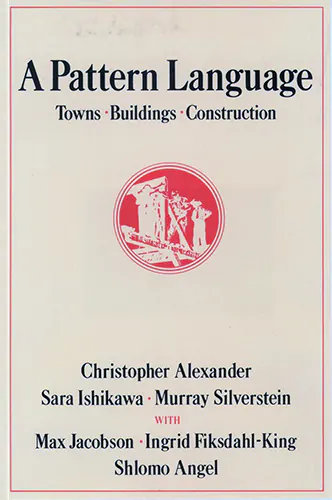
A Pattern Language
Towns, Buildings, Construction
A Pattern Language is a guide to designing spaces that feel alive and human. It presents 253 “patterns” (practical, timeless design solutions) to help create homes, buildings, and cities that truly support the way people live, connect, and thrive.

A Phenomenon of Counter-Evolution in Human Biology
or the Existential Fear
Teilhard explores the “existential fear” that grips modern humans as we confront the vastness of the universe and our seeming insignificance within it. He believes this fear stems from our growing awareness of cosmic immensity, our isolation, and the threat of depersonalization. However, he proposes a radical shift in perspective: by viewing the universe as convergent rather than chaotic, we can transform our terror into hope. This “convergent universe” is one that’s moving towards greater complexity and consciousness, ultimately leading to a unifying center that gives our existence profound meaning and purpose.

A Philosophical Look at System Dynamics
Donella Meadows discusses the philosophical foundations of system dynamics, a modeling approach used to understand complex systems. She emphasizes identifying causal relationships, feedback loops, rates of change, and states within systems. The goal is to model how a system’s structure generates its behavior over time, allowing for better understanding and potential intervention.

A Symbiotic View of Life
We Have Never Been Individuals
For animals, as well as plants, there have never been individuals. This new paradigm for biology asks new questions and seeks new relationships among the different living entities on Earth. We are all lichens.
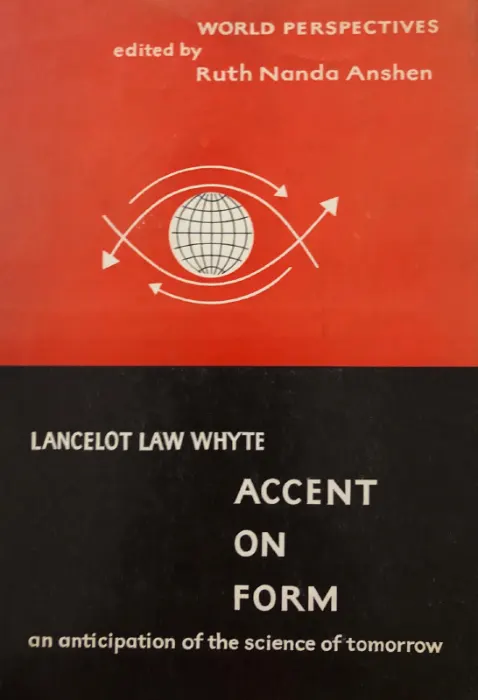
Accent on Form
According to Whyte, the next major advance in science will consist in the use of formal principles, meaning concerned with spatial form, as contrasted with individual constituent parts. This theme is developed in a crescendo from atoms to the creative power of the human intellect with disarming eloquence and elegance, with frequent taunts agsint the neglect of formal and formative principles in present-day science.

Alchemical Youth on the Edge of the World
Can magic mushrooms save the world? Terence McKenna makes the case that today's global youth culture is reviving ancient shamanic techniques to dissolve ego boundaries and empower imagination. Tracing this impulse back to prehistoric mushroom use, McKenna sees history fast approaching a transcendental tipping point. To end the modern era's disequilibrium, he argues we must reconnect with the mystical power of psychedelic plants. McKenna paints a mind-bending vision of how neo-shamanic youth, guided by plant teachers, can lift humanity into a new golden age of ecological harmony and psychic unity.

Appreciating Imagination
Join Terence McKenna in this weekend workshop as he takes us on an imaginative journey into the depths of human creativity. He explores psychedelics, virtual worlds, and shamanic states of consciousness, saying how an embrace of our imagination allows us to envision and manifest alternate realities beyond cultural conditioning. By cultivating our creative faculties with mathematical reasoning, intuition, and immersion in nature, he guides us toward transcending ideological limits into an enlightened future of compassion. Ultimately, breaking boundaries through the power of imagination will inspire us to reach new heights of understanding and connectivity.

Awakening to Archaic Values
A weekend workshop in which Terence encourages humanity to return to harmonic habits which have been lost in the tide of time.

Build Your Own Damn Wagon
(Laws and Freedom, Habits and Novelty)
"Do not watch, do not consume," implores Terence McKenna, inviting us on a thought-provoking journey to reclaim our humanness. By building our own conceptual wagons, rather than riding ready-made vehicles of meaning, we can travel along unique paths of critical thinking. Once within our own virtual worlds, the wonder of our distinctive minds will be open for discovery.
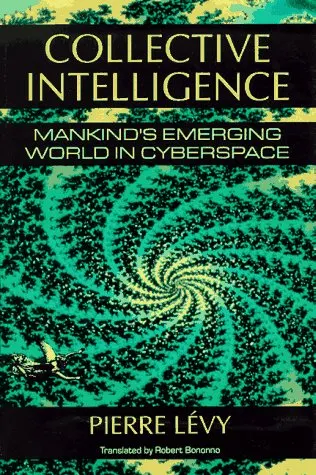
Collective Intelligence
Mankind's Emerging World in Cyberspace
The number of travelers along the information superhighway is increasing at a rate of ten percent a month. How will this communications revolution affect our culture and society? Though awed by their potential, we’ve feared computers as agents of the further alienation of modern man: they take away our jobs, minimize direct human contact, even shake our faith in the unique power of the human brain. Pierre Lévy believes, however, that rather than creating a society where machines rule man, the technology of cyberspace will have a humanizing influence on us, and foster the emergence of a “collective intelligence”—a meeting of minds on the Internet—that will validate the contributions of the individual.

Collective Memory, Group Minds, and the Extended Mind Thesis
While memory is conceptualized predominantly as an individual capacity in the cognitive and biological sciences, the social sciences have most commonly construed memory as a collective phenomenon. Collective memory has been put to diverse uses, ranging from accounts of nationalism in history and political science to views of ritualization and commemoration in anthropology and sociology. These appeals to collective memory share the idea that memory ‘‘goes beyond the individual’’ but often run together quite different claims in spelling out that idea. This paper reviews a sampling of recent work on collective memory in the light of emerging externalist views within the cognitive sciences, and through some reflection on broader traditions of thought in the biological and social sciences that have appealed to the idea that groups have minds. The paper concludes with some thoughts about the relationship between these kinds of cognitive metaphors in the social sciences and our notion of agency.

Conceptions of a Global Brain
an Historical Review
Imagine a giant, intelligent brain made of humanity and its computers—the Global Brain. This idea blends views of society as a living organism, a universal encyclopedia, and an emerging higher consciousness. Global networks like the Internet not only share information but also learn and adapt together. By combining insights from evolution and cybernetics, we can overcome conflicts and build a collective intelligence that makes solving world problems more efficient and creative.

Conscious Evolution
Our Next Stage
Barbara explored the ideas of Pierre Teilhard de Chardin, and the possibilty of humanity gradually giving birth to a new planetary-scale consciousness, which she called Homo universalis.

Conversations with Paolo Soleri
Paolo Soleri's architectural-philosophical thinking sets forth fundamental reformulations to address the globalizing world's most urgent environmental, urban infrastructural, and socio-ethical problems. In this book, Soleri's most recent ideas are distilled into an accessible overview for the general reader. Soleri proposes to transform our societal systems while raising sights to a radically long-term and humanistic perspective. Among the interrelated concepts outlined here are Soleri's highly original ideas of orchid and forest, the city as hyper-organism, the urban effect, and the love project. These inspiring ideas are acutely timely in light of current environmental trends: responding to global climate change, radically reducing oil dependence, embracing frugality and reduced consumption, while simultaneously confronting issues of suburban sprawl, urban renewal, smart land use, and wise food production.
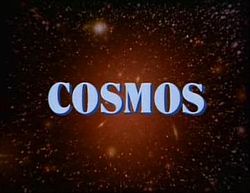
Journeys in Space and Time
Cosmos, Episode 8
Ideas about time and space are explored in the changes that constellations undergo over time, the redshift and blue shift measured in interstellar objects, time dilation in Albert Einstein's theory of relativity, the designs of both Leonardo da Vinci and spacecraft that could travel near light speed, time travel and its hypothetical effects on human history, the origins of the Solar System, the history of life, and the immensity of space. In Cosmos Update, the idea of faster-than-light travel by wormholes (researched by Kip Thorne and shown in Sagan’s novel Contact) is discussed.

Countdown Into Complexity
Briefing for a Descent Into Novelty
At his weekend workshop Terence led attendees on an intellectual odyssey traversing psychedelics, virtual reality, technology, culture, spirituality, and the evolution of novelty over time. Blending philosophy, futurology, and mysticism, he explored humanity's relationship with nature and machines, challenging participants to think critically, create freely, and keep an open mind. The goal was to expand consciousness and uncover deeper truths about existence.
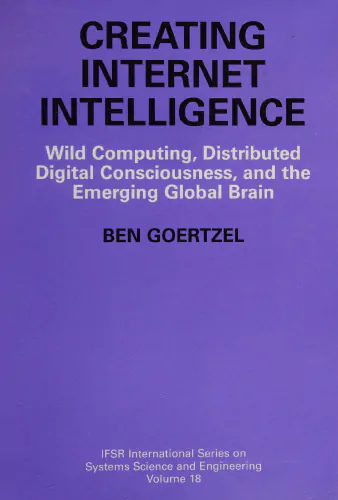
Creating Internet Intelligence
Wild Computing, Distributed Digital Consciousness, and the Emerging Global Brain
Creating Internet Intelligence explores the potential for global computer networks to evolve into autonomous intelligent systems, offering practical guidance for shaping this future. It presents a theory of intelligent systems and examines “Internet intelligence” through commercial, social, psychological, and philosophical lenses. Goertzel details pioneering software like the Webmind AI Engine and Webworld platform, designed to seed this evolution. This interdisciplinary work appeals to computer scientists, philosophers, and anyone intrigued by the intersection of technology, intelligence, and human life.

DMT and Integrated Information Theory
Neuroscientist Christof Koch’s 5-MeO-DMT experience, marked by self-dissolution and “terror and ecstasy,” sparks a deep discussion on consciousness, Integrated Information Theory (IIT), and reality. IIT suggests consciousness is non-computable and may exist beyond individual brains, potentially forming higher-order minds. Koch inquires whether his psychedelic journey was a mere brain state or a glimpse into a universal mind.
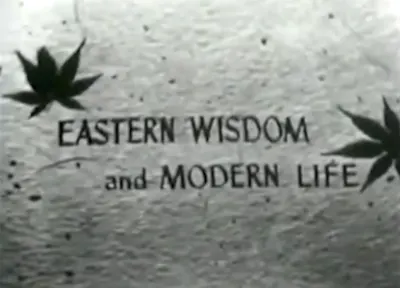
Omnipotence
Eastern Wisdom and Modern Life (Episode 13)
Watts explores the contrast between organic and mechanical world views and the difference between the growing process and the making process, and he explains why one corresponds to a democratic principle and the other to a monarchical hierarchy.
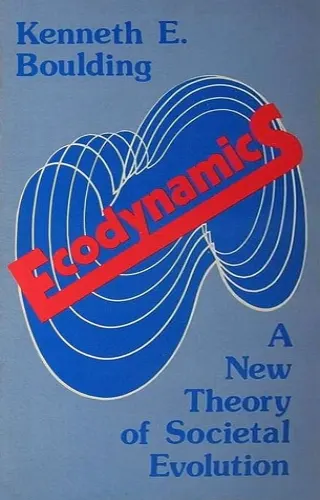
Ecodynamics
A New Theory of Societal Evolution
Embark on a captivating journey into Ecodynamics, a realm where the choreography of humanity and nature unfolds. This narrative intricately weaves economics, ecology, and human behavior, illuminated by Boulding's visionary concept of ecodynamics. His framework reveals the harmonious yet fragile bond between ecosystems and economies, a bond often ignored at our peril. Boulding's interdisciplinary exploration spans from population dynamics to resource usage and technology's role, dismantling the myth of infinite growth in a finite world. Ecodynamics challenges norms, offering profound insights that beckon us to adopt sustainable practices. This clarion call echoes—safeguard both civilization and the environment for lasting well-being.

Evolution of the Idea of Evolution
Teilhard reveals that evolution has outgrown its origins as a mere biological theory to become the universe’s own heartbeat—a vast, unfolding process shaping matter, mind, and meaning alike. Once we thought ourselves its observers; now we awaken as its apex and instrument, the conscious spearpoint of creation’s long ascent.
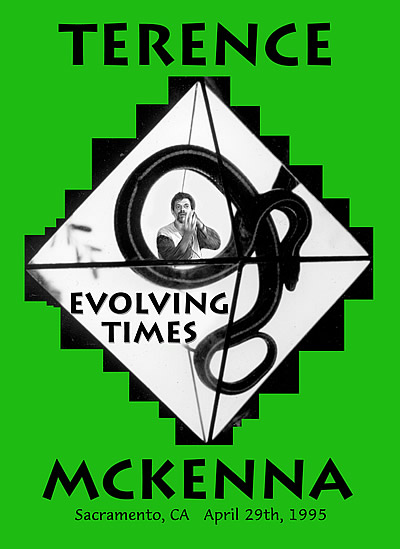
Evolving Times
This evening address is one of Terence’s funniest, in which much is said about monkeys, mushrooms, plants, and people. The question and answer session gets good and lively, with his unique analysis of UFOs, governments, and possible evolutionary pathways for us and the planet.

Fossil Man
Reflections on a Recent Book
This essay by Pierre Teilhard de Chardin discusses the evolution of views on the antiquity of man over the last century. It highlights Marcellin Boule's book, Les Hommes Fossiles, which presents the author's research on human origins, particularly Neanderthal man. The essay explores the complexity and antiquity of human evolution and emphasizes the need for reconciling scientific findings with religious beliefs. It suggests that humanity's material origins can be understood as a prolonged effort of the Earth as a whole, and it calls for embracing all rays of light from science and faith to find a unified understanding of human origins.
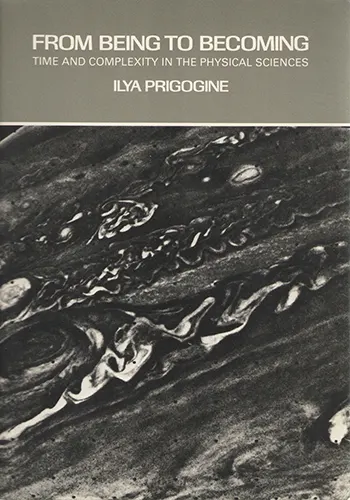
From Being to Becoming
Time and Complexity in the Physical Sciences
How has order emerged from chaos? In this book, intended for the general reader with some background in physical chemistry and thermodynamics, Ilya Prigogine shows how systems far from equilibrium evolve elaborate structures: patterns of circulation in the atmosphere, formation and propagation of chemical waves, the aggregation of single-celled animals. In an effort to understand these phenomena, he explores the philosophical implications of the work for which he received the 1977 Nobel Prize in Chemistry. From Being to Becoming explains how order can develop and offers a new approach to the asymmetry between past and future—the irreversibility of time. Prigogine presents an evolving rather than static world. This imaginative work is sure to arouse controversy and may change the way that the reader sees the laws of science and the world that those laws seek to explain.
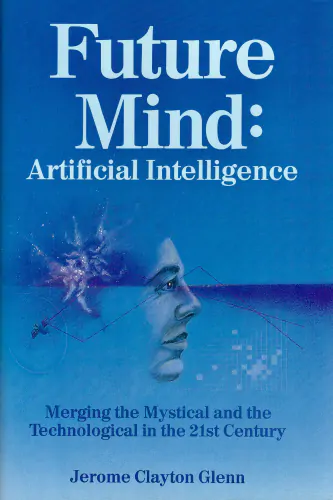
Future Mind
Artificial Intelligence: Merging the Mystical and the Technological in the 21st Century
Glenn examines the potential for future integration between man and machine drawing on examples in medicine (the Jarvik heart, Utah arm, Triad hip, etc) and advances in human-like processing via machine in terms of speech recognition and other information technologies. While the author touches on topics ranging from philosophy and religion to science and politics, the unifying theme is what he sees as the inescapable blending of machine-enhanced humans and ‘conscious’ artificial intelligence.
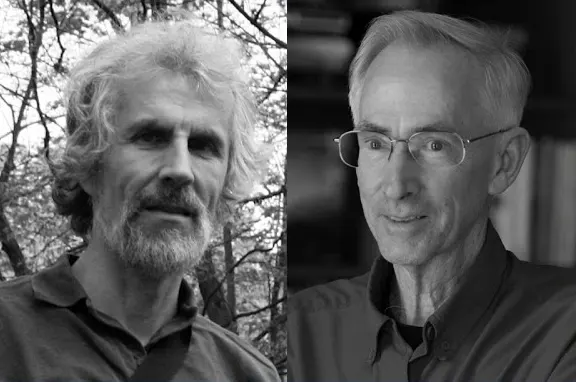
Glimpsing the Global Brain
Complex systems theorist Heylighen and evolutionary biologist Wilson discuss a possible phase transition of humanity in which the members of our species become neurons in a planetary brain, utilizing the Internet as a shared exocortex.

Hidden Belief Systems
Alan talks about unexamined assumptions that underlie our commonsense beliefs which may cause confusion in our thinking about nature.

Hot Concepts and Melting Edges
A weekend workshop held at Esalen, with the alternate titles of Deeper and Broader Questions and Eros, Chaos, and Meaning's Edge.

Human Metasystem Transition (HMST) Theory
This article proposes a theory of human evolution termed Human Metasystem Transition (HMST), suggesting that major transitions in human organization have been facilitated by the emergence of new information media and energy sources. It posits that the current convergence of the Internet and renewable energy could catalyze a fourth metasystem transition, leading to a global superorganism with compressed spatial and temporal dimensions of human interaction.
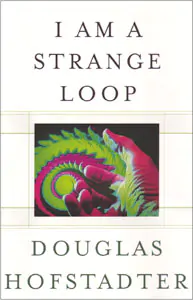
I Am A Strange Loop
Douglas Hofstadter examines in depth the concept of a strange loop to explain the sense of "I".

Imagination in the Light of Nature
Terence claims that “the boundless creativity of the human mind will be tapped into and come to our aid.” His bold statement is followed by an inspirational pep-talk about how miraculous the appearance of consciuosness in this universe is, and what a valuable potential humans represent in future cosmic evolution.

Individual and the World
This seminar covers a variety of topics, from the illusion of our separation from the environment and the futility of trying to be genuine, all the way to the discipline required to handle mystical experiences in order to bring something back from them to share with the rest of the world. The presentation ends with his endorsement of insanity, saying a healthy amount of craziness in old age is necessary to prepare for a joyous death.
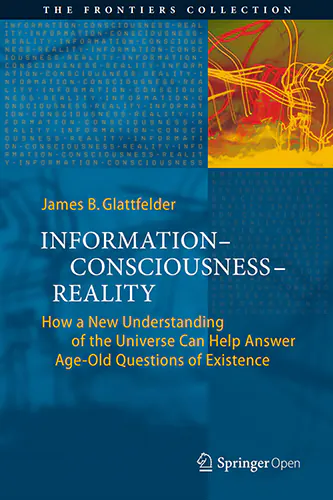
Information — Consciousness — Reality
How a New Understanding of the Universe Can Help Answer Age-Old Questions of Existence
This open access book chronicles the rise of a new scientific paradigm offering novel insights into the age-old enigmas of existence. Over 300 years ago, the human mind discovered the machine code of reality: mathematics. By utilizing abstract thought systems, humans began to decode the workings of the cosmos. From this understanding, the current scientific paradigm emerged, ultimately discovering the gift of technology. Today, however, our island of knowledge is surrounded by ever longer shores of ignorance. Science appears to have hit a dead end when confronted with the nature of reality and consciousness. In this fascinating and accessible volume, James Glattfelder explores a radical paradigm shift uncovering the ontology of reality. It is found to be information-theoretic and participatory, yielding a computational and programmable universe.

Information-Energy Metasystem Model
The human system is developing into a global biocultural superorganism, yet existing control systems appear inadequate for aligning a stable global goal state. Cadell Last proposes the Information-Energy Metasystem Model (IEMM), exploring human control system transitions throughout history. Drawing from cybernetic theories, the IEMM posits that major control transitions depend on specific information-energy control and feedback properties. As humanity approaches a potential fourth metasystem, Last argues for distributed, digital, and democratic mechanisms to organize a global commons, harnessing collective intelligence and direct democracy.

Interview on Cybernetics
Heinz von Förster delves into the enigmatic realm of cybernetics. The conversation dances around the essence of this field, exploring its core principles of circularity, self-organization, and the nature of information. Together with Sherwin Gooch, he grapples with profound questions surrounding the definition of life, the Gaia hypothesis, and the tantalizing possibility of replicating human consciousness. Ultimately, the dialogue underscores the intricate interplay between observer and observed, challenging conventional notions of information and reality.

Is the Emergence of Life an Expected Phase Transition in the Evolving Universe?
This article proposes a new definition of life as chemical systems that achieve catalytic closure, constraint closure, and spatial closure. It argues that the emergence of such living systems is an expected phase transition in the evolving universe. However, the ever-creative evolution of life thereafter cannot be explained by physics alone, showing the limits of reductionism. Life is a double miracle—expected yet unexplainable.
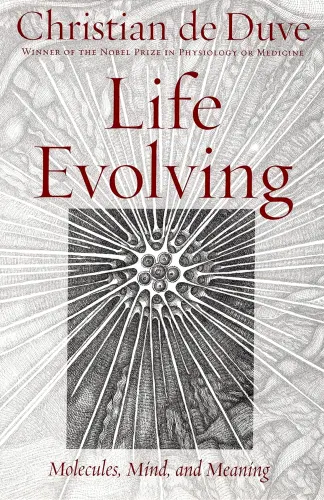
Life Evolving
Molecules, Mind, and Meaning
Christian de Duve, a Nobel Prize-winning biologist, takes readers on a journey through the biological world, from the tiniest cells to the future of life. He argues that life was bound to arise and discusses the evolution of humans, consciousness, language, science, emotion, morality, altruism, and love. De Duve concludes by speculating on humanity's future, including the possibility of evolving into a new species, and shares his thoughts on God and immortality. This wise and humane book sums up his learnings about life and our place in the universe.

Life and the Planets
Pierre Teilhard de Chardin explores the concept of complexification in the universe, focusing on the ever-increasing combination of smaller elements into larger structures, and then extrapolates this behavior to humanity's current situation. What if the human species is an intermediary evolutionary stage, and what would the next rung on the ladder look like? Teilhard suggests that it will involve the merging-together of all humanity into a divine, planetized consciousness.

Linear Societies and Nonlinear Drugs
Speaking on the first day of the 1999 Palenque Entheobotany Conference at the Chan Kha Hotel, Terence McKenna probes the mind-blowing philosophical revelations of psychedelics. He contends these consciousness-expanding substances can shatter Western rationality, unveiling mystical realities beyond mainstream paradigms. Psychedelics may hold the key to reimagining society's connection with nature and technology. McKenna passionately argues these drugs can catalyze new ways of thinking, fueling an intellectual revolution to change the world.

Malcolm’s 100× Vision
Malcolm Ocean paints a picture of a future where human collaboration reaches new heights, imagining a world in the 2030s where small groups of people achieve profound synchronicity, forming “collective brains” capable of solving complex problems. These groups are part of larger networks that tackle global issues, create innovative products, and foster personal growth. Ocean envisions a society where work is deeply fulfilling, financial security is guaranteed, and human potential is maximized through trust, emotional coherence, and shared consciousness. It’s a hopeful glimpse into a world of enhanced human connection and capability.

Man in Universe
Through cosmic timescales, humanity has voyaged in its vessel Earth, navigating by the star-charts of knowledge. Now we enter unmapped seas, led on by curiosity's compass. Though frail, our minds pilot mighty technologies, taming invisible forces to reshape our world. If we attune to the celestial rhythms resonant in matter's deepest reality, we may yet fulfill our odyssey's purpose—to be worthy stewards of the living jewel suspended in the eternal darkness.
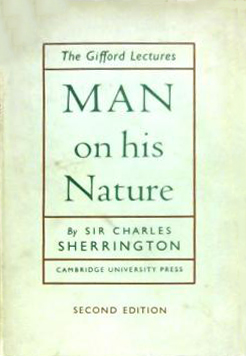
Man on his Nature
Sherrington had long studied the 16th century French physician Jean Fernel, and grew so familiar with him that he considered him a friend. In the years of 1937 and 1938, Sherrington delivered the Gifford lectures at the University of Edinburgh; these focused on Fernel and his times, and came to form the principal content of Man on His Nature. The book was released in 1940, and a revised edition came out in 1951. It explores philosophical thoughts about the mind, the human existence, and God, in connection with natural theology. In his ideas on the mind and cognition, Sherrington introduced the idea that neurons work as groups in a "million-fold democracy" to produce outcomes rather than with central control.

Man's Place in the Universe
Reflexions on Complexity
In this unusually personal essay, Teilhard speaks almost across the table, inviting us to rethink our cosmic standing. He shows how humanity, once dwarfed by vast space and tiny particles, regains significance through a third dimension of reality: complexity. As matter organizes itself into ever-deeper centers, consciousness rises—and in us, becomes self-aware. Humanity is not a cosmic accident, he suggests, but the universe awakening to itself and preparing its next leap.

Megatripolis Opening Night
Terence McKenna discusses the discovery of a new legal psychedelic compound from the salvia divinorum plant. He argues that humanity is on the brink of a cultural transformation driven by the accelerating production of novelty in the universe, enabled by psychedelics and technology. He envisions a transcendental future where boundaries dissolve and consciousness evolves.

Merging Minds
The Conceptual and Ethical Impacts of Emerging Technologies for Collective Minds
A growing number of technologies are currently being developed to improve and distribute thinking and decision-making. Rapid progress in brain-to-brain interfacing and swarming technologies promises to transform how we think about collective and collaborative cognitive tasks across domains, ranging from research to entertainment, and from therapeutics to military applications. As these tools continue to improve, we are prompted to monitor how they may affect our society on a broader level, but also how they may reshape our fundamental understanding of agency, responsibility, and other key concepts of our moral landscape.
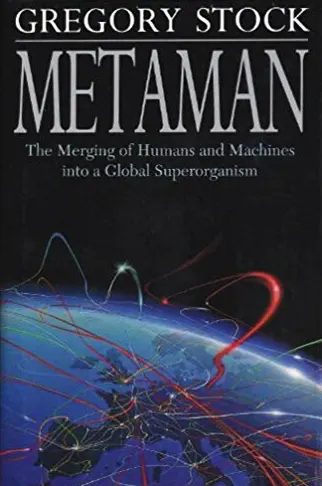
Metaman
The Merging of Humans and Machines into a Global Superorganism
In this visionary book, Gregory Stock gives us a new way of understanding our world and our future. He develops the provocative thesis that human society has become an immense living being: a global superorganism in which we humans, knitted together by our modern technology and communication, are like the cells in an animal's body. Drawing on impressive research, Stock shows this newly formed superorganism to be more than metaphor: it is an actual living creature, which he has named Metaman, meaning beyond and transcending humans.

Metaphysics of Psychedelics
Terence McKenna delves into the enigmatic realm of ayahuasca, unveiling its technological complexity and potential to unlock hidden dimensions of consciousness. His captivating discourse explores the interplay of mind, matter, and the imagination, hinting at the possibility of accessing realms beyond our ordinary perception.

Mind As Society
Conscious intelligence may be viewed as a computer system composed of many smaller parallel processing programs. Marvin Minsky, Ph.D., is one of the acknowledged founders of the mathematical theory of computation, artificial intelligence, and robotics. He argues that understanding the individual as a very sophisticated machine actually affirms human dignity.

Mind Outside Brain
A Radically Non-Dualist Foundation for Distributed Cognition
We approach the problem of the extended mind from a radically non-dualist perspective. The separation between mind and matter is an artefact of the outdated mechanistic worldview, which leaves no room for mental phenomena such as agency, intentionality, or feeling. We propose to replace it by an action ontology, which conceives mind and matter as aspects of the same network of processes. By adopting the intentional stance, we interpret the catalysts of elementary reactions as agents exhibiting desires, intentions, and sensations. Autopoietic networks of reactions constitute more complex super-agents, which moreover exhibit memory, deliberation and sense-making. In the specific case of social networks, individual agents coordinate their actions via the propagation of challenges. The distributed cognition that emerges from this interaction cannot be situated in any individual brain. This non-dualist, holistic view extends and operationalises process metaphysics and Eastern philosophies. It is supported by both mindfulness experiences and mathematical models of action, self-organisation, and cognition.

Nature Loves Complexity
Terence argues that psychedelics reconnect us to archaic values like community, reverence for nature, and direct felt experience. He sees psychedelics as part of nature's tendency to conserve complexity and novelty. McKenna critiques science's misapplication of probability theory and suggests time itself fluctuates, finally proposing an ethics of aligning with nature's creative unfolding.

Nature is the Center of the Mandala
Presented at the Shared Visions bookstore, Terence talks about humanity's path towards greater consciousness, and attempts to take a glance at what comes after the Omega Point.

Noospheric Consciousness
Integrating Neural Models of Consciousness and of the Web
The world-wide web has been conceptualized as a global brain for humanity due to its neural network-like organization. To determine whether this global brain could exhibit features associated with consciousness, we review three neuroscientific theories of consciousness: information integration, adaptive resonance and global workspace. These theories propose that conscious states are characterized by a globally circulating, resonant pattern of activity that is sufficiently coherent to be examined and reflected upon. We then propose a correspondence between this notion and Teilhard de Chardin’s concept of the noosphere as a forum for collective thinking, and explore some implications of this self-organizing dynamics for the evolution of shared, global understanding.

Note on the Biological Structure of Mankind
Humanity isn’t raw clay, but a living, evolving organism shaped by deep cosmic laws. As consciousness and complexity entwine, the human mass tightens, organizes, and spiritualizes itself. Diversity must be honored, unity embraced. Any blueprint for the future that ignores these biological forces is doomed from the start.

On Looking at a Cyclotron
Reflections on the Folding-Back upon Itself of Human Energy
Visiting Berkeley’s cyclotrons, Teilhard de Chardin sees more than machines—he perceives symbols of humanity’s own acceleration. Our vast networks of research, energy, and invention, converging like particles in a magnetic field, are drawing humankind into a single reflective consciousness—an evolutionary spiral toward the ultra-human, where science and spirit finally unite.

On Self-Organizing Systems and Their Environments
An adaptation of an address given at The Interdisciplinary Symposium on Self-Organizing Systems in Chicago, Illinois. Von Förster argues self-organizing systems don't exist in isolation but require an environment to draw energy and order from. He defines measures of order and mechanisms whereby order arises, including via internal "demons" that decrease system entropy and external "demons" that increase maximum possible entropy. Overall, some noise helps systems remain adaptable.

On The Probable Existence Ahead Of Us Of An ‘Ultra-Human’
Teilhard talks about a vast realm of the Ultra-Human which lies ahead of us: a realm in which we shall not be able to survive, or super-live, except by developing and embracing on earth, to the utmost extent, all the powers of common vision and unanimazation that are available to us.

On the Nature of the Phenomenon of Human Society, and its Hidden Relationship with Gravity
We stand at the dawn of a new era for humanity. As Teilhard de Chardin observed, cosmic forces are propelling our social evolution. Though born of gravitational forces, our consciousness now rises with its own creative power to bring forth previously unimagined realms of thought and social organization. Our future lies in our hands.

Opening the Doors of Creativity
This far-out lecture held at the Carnegie Art Museum riffs on art, shamanism, psychedelics, and saving the planet. Terence sees artists as modern shamans who can reconnect us to the Gaian mind. He thinks we're an infant species held in nature's arms, but we've got to get our act together fast and let the irrational muse guide us, or we'll trash the place. Heavy stuff, but optimistically visionary.

Outline of a Dialectic of Spirit
Teilhard de Chardin explores how human understanding evolves through a dynamic interplay between the known and the unknown, like a spark leaping back and forth. He argues that the universe is driven by a rising complexity and consciousness, culminating in humanity. This progression points toward an ultimate convergence, or “Omega Point,” which he identifies with a transcendent God. Teilhard connects this cosmic evolution to Christianity, suggesting that Christ embodies this divine culmination, uniting the material and spiritual realms in a harmonious, evolving whole.

Permitting Smart People to Hope
McKenna traipses through a mélange of scientific and technological folderol—the detection of the top quark, swift progress on sequencing the human genome, newfangled theories about the origin of the moon, quantum bafflements like non-locality, the proliferation of the internet and information technology, speculations on the nature of time from Prigogine, and sundry other bamboozlements. He elucidates how these breakthroughs in diverse fields might converge to profoundly transform human civilization, culture, and consciousness in the imminent future.

Physics of Life, Time, Complexity, and Aliens
Sara Walker and Lex Fridman explore life’s grand mysteries, touching on the nature of existence and the origins of life to the potential of artificial intelligence and the future of consciousness. Walker’s unique perspective challenges conventional wisdom, inviting us to reconsider our place in the cosmic dance.
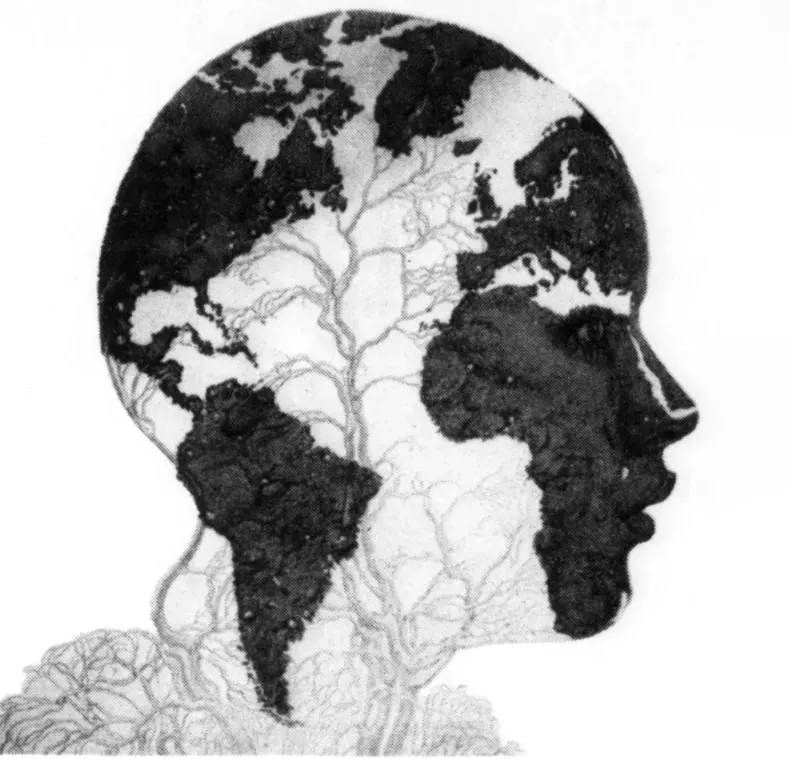
Plan, Plant, Planet
McKenna urges us to look at plants more deeply and find within their biological organization a model for sustainable modern civilization.
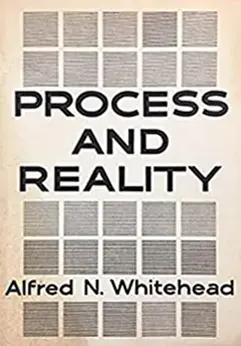
Process and Reality
An Essay in Cosmology
One of the major philosophical texts of the twentieth century, Process and Reality is based on Alfred North Whitehead’s influential lectures that he delivered at the University of Edinburgh in the 1920s. In it, he propounds a philosophy of organism (or process philosophy), in which the various elements of reality are brought into a consistent relation to each other. It is also an exploration of some of the preeminent thinkers of the seventeenth and eighteenth centuries, such as Descartes, Newton, Locke, and Kant.

Progress Through Fear
A talk on the impact of science and technology on man's role in the natural world.
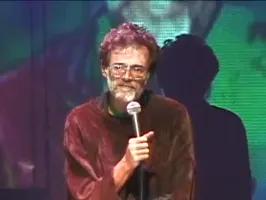
Psychedelics in the Age of Intelligent Machines
Humanity is metamorphosing through the synergy of psychedelics and machines, transcending biological constraints to become a galactic, immortal intelligencia. Print defined our ego boundaries, but electronic media and plant allies are dissolving those illusions. Merging with superintelligent AIs, we’ll birth an alchemical singularity—a spiritual, universe-taming mind born from techno-shamanic ecstasy. History crumbles as novelty’s virus engulfs the old operating systems, unleashing our wildest potentials. The felt presence of boundless experience awaits!

Reflection on the Compression of Mankind
In this compressed world, humanity feels the squeeze. But despair not! This pressure cooker of co-reflection may be evolution's secret recipe for elevating consciousness. As we rub elbows and neurons, a tantalizing possibility emerges on the horizon: a cosmic convergence of minds, a "conspiration" of monads. Will this psychic attraction be our salvation, harmonizing the restless billions? The thinking earth must choose: chaotic crush or convergent release. Intriguing times ahead!

Reflections on the Scientific Probability and the Religious Consequences of an Ultra-Human
Evolution as a cosmic drama: matter rising through life into reflective humanity, converging toward a planetary mind. Teilhard says this “ultra-human” destiny fuses science and spirit, where God is not above but ahead—emerging as love at the core of creation, and igniting the world into a conscious fire.

Reviving the Archaic
A New View of Evolution
Terence McKenna unveils an “archaic revival” that could save humanity and our planet. He makes the controversial claim that psychedelic plants catalyzed the emergence of human consciousness, language, and our fertile imaginations eons ago. McKenna advocates reviving the shamanic practices and partnership values of our prehistoric ancestors to transcend the isolated ego and re-establish a symbiotic relationship with nature’s “great piece of integrated linguistic machinery.” His boundary-dissolving ideas shatter conventional thinking about our past, present, and the transformative possibilities for our collective future.

Rise of the Robots
By 2050 robot "brains" based on computers that execute 100 trillion instructions per second will start rivaling human intelligence.

Sacred Plants as Guides
New Dimensions of the Soul
Terence McKenna takes us on a journey through history, exploring the powerful role of psychedelic plants in human evolution and consciousness. He argues that these plants offer a gateway to hidden realms of reality, inhabited by enigmatic entities and offering profound insights. Reconnecting with these ancient allies could be the key to solving our modern problems and unlocking a brighter future for humanity.
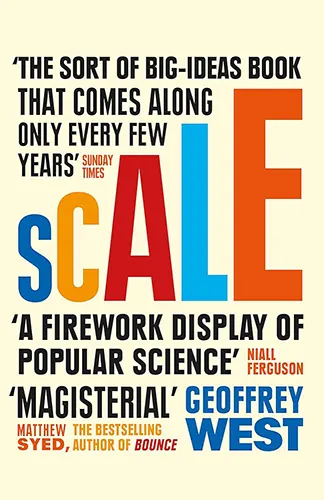
Scale
The Universal Laws of Growth, Innovation, Sustainability, and the Pace of Life in Organisms, Cities, Economies, and Companies
The former head of the Sante Fe Institute, visionary physicist Geoffrey West is a pioneer in the field of complexity science, the science of emergent systems and networks. The term “complexity” can be misleading, however, because what makes West’s discoveries so beautiful is that he has found an underlying simplicity that unites the seemingly complex and diverse phenomena of living systems, including our bodies, our cities and our businesses.

Science and Ethics
Science and Ethics was the title of the "Conway Memorial Lecture" delivered by English biologist, scientist and mathematician John Burdon Sanderson Haldane at Essex Hall in London.

Shamanism, Alchemy, and the Millennium
A whimsical reflection on humanity's journey toward ever-greater connectedness, from the cosmic singularity to the noosphere's fanciful manifestations. Could the shamanic alchemist's mythic intuition, the goddess's wisdom, and capitalism's impatient urge together guide us to the stars and back to Eden? An optimistic revelry.

Shamanology
Terence McKenna illuminates the world of Amazonian shamanism and its visionary brew, ayahuasca. He presents these plant hallucinogens not as simple drugs, but as sophisticated indigenous technologies for exploring consciousness. McKenna argues they are vital tools for evolving language, deconditioning us from cultural myths, and navigating the future of human evolution as we journey into the cosmos and the imagination.

Shedding the Monkey
Presented at the Shared Visions bookstore.

Solid Emptiness
Alan explores Mahayana Buddhism and the concept of śūnyatā (“emptiness”), emphasizing it as freedom from clinging, not nihilism. He explains how language and the illusion of a separate self cause suffering and contrasts this with the fluid, interconnected reality of life. Enlightenment, he argues, is embracing life’s impermanence without attachment, unlocking creativity, joy, and presence. Far from passive, this mindset energizes individuals, offering a remedy to Western culture’s obsession with control and anxiety.

Some Reflexions on the Conversion of the World
Humanity has discovered infinite space, endless time, and unstoppable evolution—a new faith in progress. Teilhard says: don’t fight it, fuse it. Christianity must reveal Christ as the universe’s living center, not a brake on growth but its ultimate flame. Only then can heaven and earth unite, and the fire of faith spread like evolution itself.

Super- and/or Meta-being(s)
Could human consciousness transcend biological limits and merge with advanced technology to achieve a form of cybernetic immortality? In Heylighen’s vision, our essence suvives through evolving hybrid systems, preserving individuality while fostering unprecedented connectivity. This integration doesn’t diminish our humanity but amplifies it, allowing us to explore the cosmos and push the boundaries of existence. While not everyone may choose this path, those who do could shape the destiny of our species and the cosmos.

Super-Humanity, Super-Christ, Super-Charity
Some New Dimensions for the Future
Humanity, Teilhard argues, is awakening in an evolutionary storm—one pulling us toward a larger, more unified “Super-Humanity.” In this widening scale of mind and world, Christ emerges not as a distant memory but as the universe’s glowing center, the Omega drawing all things together. From this cosmic magnetism arises a “Super-Charity”: love powerful enough to drive evolution itself.
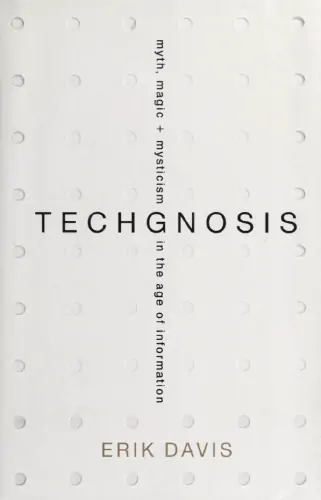
TechGnosis
Myth, Magic, and Mysticism in the Age of Information
How does our fascination with technology intersect with the religious imagination? While the realms of the digital and the spiritual may seem worlds apart, esoteric and religious impulses have in fact always permeated (and sometimes inspired) technological communication. Erik Davis uncovers startling connections between such seemingly disparate topics as electricity and alchemy; online role-playing games and religious and occult practices; virtual reality and gnostic mythology; programming languages and Kabbalah. The final chapters address the apocalyptic dreams that haunt technology, providing vital historical context as well as new ways to think about a future defined by the mutant intermingling of mind and machine, nightmare and fantasy.

Technology and the Human Environment
Perhaps no futurist has been more energetic, more vocal, more popular, or more optimistic than a seventy-six-year-old engineer-visionary, poet-philosopher named R. Buckminster Fuller. Fuller’s planetary perspective has won him zealous converts the world over. Even those who disagree with his technological transcendentalism share unbegrudged admiration for the world’s youngest old futurist.

The Activation of Human Energy
Teilhard sees human energy not as brute force but as consciousness folding back on itself, organizing matter into ever greater complexity. Our survival rests less on fuel than on vision and will. This energy converges toward a final peak—an irreversible surge of awareness—suggesting that spirit, not physics, is the true engine of the cosmos.
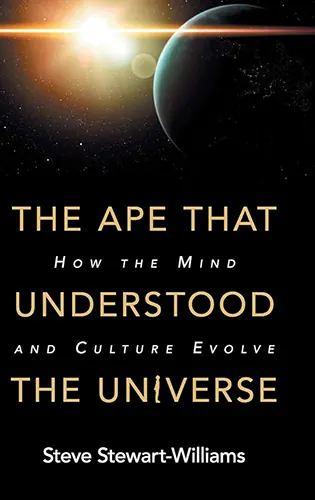
The Ape that Understood the Universe
How the Mind and Culture Evolve
The Ape that Understood the Universe is the story of the strangest animal in the world: the human animal. It opens with a question: How would an alien scientist view our species? What would it make of our sex differences, our sexual behavior, our child-rearing patterns, our moral codes, our religions, our languages, and science? The book tackles these issues by drawing on ideas from two major schools of thought: evolutionary psychology and cultural evolutionary theory. The guiding assumption is that humans are animals, and that like all animals, we evolved to pass on our genes. At some point, however, we also evolved the capacity for culture—and from that moment, culture began evolving in its own right. This transformed us from a mere ape into an ape capable of reshaping the planet, travelling to other worlds, and understanding the vast universe of which we're but a tiny, fleeting fragment.
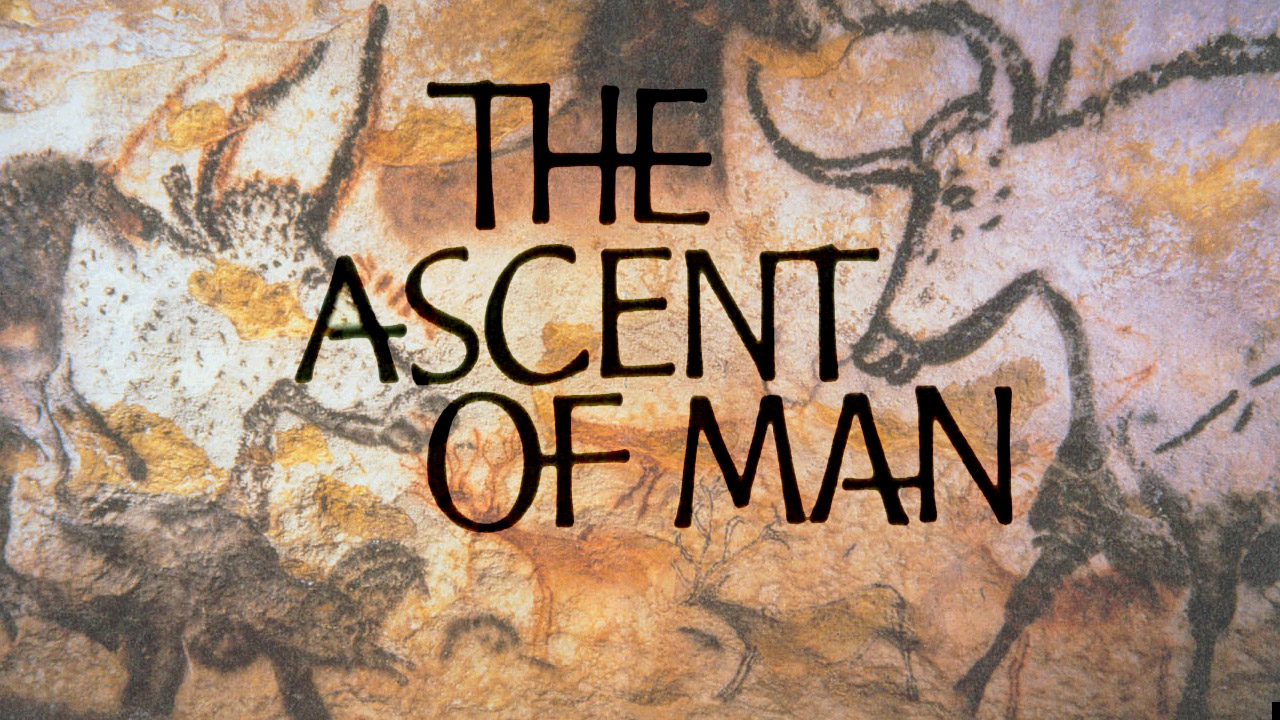
World Within World
The Ascent Of Man, Episode 10
In the vaults of ancient Polish salt mines Bronowski embarks on a journey to the hidden world inside the atom. He traces the history of the men and the ideas that made twentieth-century physics the greatest achievement of the human imagination.

The Atomism of Spirit
Teilhard de Chardin argues that human plurality mirrors the multiplicity of atoms and stars. Just as matter progresses in complexity from subatomic particles to living cells, so consciousness evolves through increasing unification, culminating in the “Omega point”—supreme consciousness and union.

The Biosphere and the Noösphere
A general intellectual outlook of one of the most remarkable scientific leaders of the early twentieth century, focusing on a predicted historical and planetary phase transition in which humanity becomes a united force.

The Christic
The universe is evolving toward a profound unity where science and spirituality merge, Teilhard says. He envisions human consciousness and the cosmos intertwined, sparking a transformative energy that unites all life in a new, dynamic spirituality—an awakening that promises to ignite our collective future.

The Coming Technological Singularity
How to Survive in the Post-Human Era
Within thirty years, we will have the technological means to create superhuman intelligence. Shortly after, the human era will be ended. Is such progress avoidable? If not to be avoided, can events be guided so that we may survive? These questions are investigated. Some possible answers (and some further dangers) are presented.
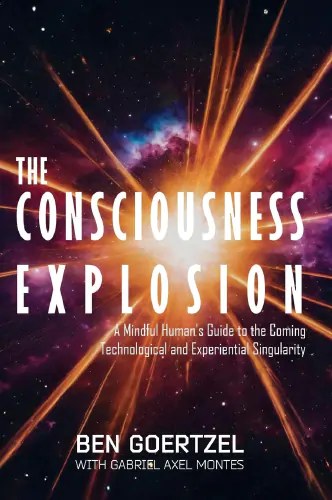
The Consciousness Explosion
A Mindful Human's Guide to the Coming Technological and Experiential Singularity
The pace of engineering and science is speeding up, rapidly leading us toward a technological Singularity—a point in time when superintelligent machines achieve and improve so much so fast, traditional humans can no longer operate at the forefront. However, if all goes well, human beings may still flourish greatly in their own ways in this unprecedented era. If humanity is going to not only survive but prosper as the Singularity unfolds, we will need to understand that the Technological Singularity is an Experiential Singularity as well, and rapidly evolve not only our technology but our level of compassion, ethics and consciousness. Great for curious and open-minded readers who want to wrap their brains around these dramatic emerging changes and empower themselves with tools to adapt and thrive.

The Constitution of Nature
Philosophy: East and West, Program 28
Watts unfurls three cosmic tapestries woven by ancient minds: the Western world's vision of nature stitched as a crafted cloth, India's playful drama where God dances every part, and China's Taoist masterwork of nature flowing free like mountain streams. Though the West's thread gave rise to technological gifts, it tangled our hearts. Now the Orient's ancient organic insight whispers fresh hope, kindling new fires of wisdom within.

The Cybernetic Manifesto
Turchin and Joslyn’s manifesto imagines humanity’s next evolutionary leap: just as cells once united to form complex organisms, they foresee humans merging into “super-beings” through direct neural connections, achieving a form of technological immortality. They argue that evolution’s new frontier isn’t biological, but rather conscious and creative, driven by human will instead of natural selection. While not everyone will choose this path of integration, they suggest it’s those who do who will ultimately explore the cosmos.

The Directions and Conditions of the Future
Teilhard de Chardin envisions human evolution as a purposeful journey guided by three intertwined trends: a natural push toward global unity, technological advances that expand our capabilities, and a deepening of reflective consciousness. Yet, he warns that without a genuine inner cohesion—rooted in love and mutual understanding—these forces may lead to a cold, mechanized future. In his view, our destiny is not random but a guided ascent toward a higher, more meaningful collective awareness.

The Economy of Attention
This article outlines a theory of the economy of attention constituting the logic of the mass media in contemporary social life, focusing on celebrity as the key manifestation of the accumulation of attention capital. I explain how the mass media exchange information and entertainment for attention, which is in turn monetised via advertising. The field of celebrity is a ‘vanity fair’ functioning as a stock exchange of attention capital – measured in circulation and viewing figures, ratings, likes, visits and so on – a form of capital that earns interest and generates additional income for those in its proximity. Overall, I argue that we are living in an era of ‘mental capitalism’ in which the relations of production themselves have inverted the relationship between the material and mental worlds, so that the realm of ideas is now the driving economic force. The article concludes by outlining the shape of a new, quaternary sector of the economy, characterised by de-materialisation and virtualisation, and raise the question of whether a focus on new forms of virtual and ideational value might possibly improve the sustainability of the world we live in, if the struggle for attention replaces the struggle for material goods.

The End of the World
Teilhard explores a cosmic vision of humanity's future, envisioning a collective consciousness facing a final choice about God. He describes the end of the world not as a disaster, but as a spiritual transformation, and imagines a dramatic unification of all beings with the divine, culminating in a mystical fusion of God and the universe.

The Energy of Evolution
Teilhard de Chardin sees evolution not as blind biology but as energy awakening to thought. Humanity inaugurates a new phase: self-directed, convergent, planetary, driven less by survival than by the magnetism of the future. Evolution’s true axis is consciousness itself, pulled toward an ultimate point of unity where being and becoming fuse.

The Evolution of Responsibility in the World
Teilhard argues that responsibility isn’t just a social rule but a cosmic imperative. The universe, he claims, is hurtling toward unity—collapsing matter into life, life into consciousness. Today, planetary compression—population growth, tech, and globalization—fuels interdependence. Each choice ripples across humanity: a pilot’s error, a scientist’s discovery, a leader’s word. This isn’t mere ethics; it’s evolution’s demand. As humanity merges into a thinking superorganism, responsibility becomes biological—a binding thread in Earth’s living tapestry, transcending laws to reflect our shared cosmic destiny.

The Global Brain as a Model of the Future Information Society
The Global Brain paradigm views the emerging global information network connecting humans and technology as a nervous system for Earth's social superorganism. This special issue surveys opportunities and challenges in developing this potentially more intelligent, synergetic system. Contributions explore political, economic, and philosophical aspects, aiming to guide the transition towards a sustainable society empowering diversity.
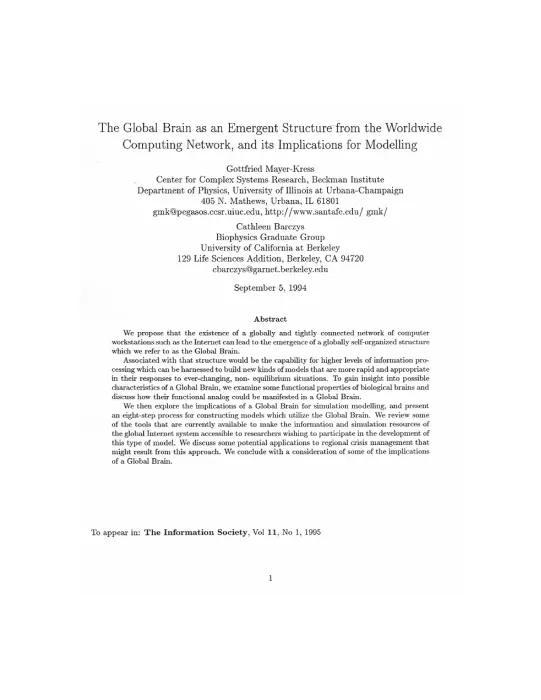
The Global Brain as an Emergent Structure from the Worldwide Computing Network
We propose that the existence of a globally and tightly connected network of computer workstations such as the Internet can lead to the emergence of a globally self-organized structure which we refer to as the Global Brain.

The Global Superorganism
An Evolutionary-Cybernetic Model of the Emerging Network Society
The organismic view of society is updated by incorporating concepts from cybernetics, evolutionary theory, and complex adaptive systems. Global society can be seen as an autopoietic network of self-producing components, and therefore as a living system or “superorganism”.

The Great Simplification
A modern take on Pierre Teilhard de Chardin’s The Phenomenon of Man and Peter Russell’s The Global Brain, Nate Hagens describes the “Great Simplification:” an inevitable economic and cultural transition beginning in the not-too-distant future.
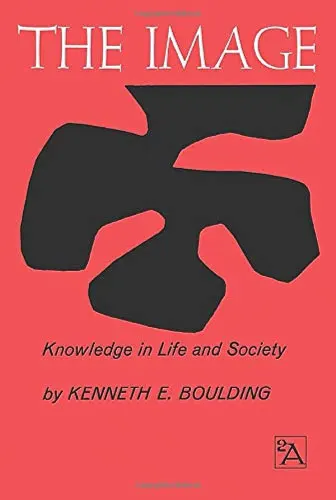
The Image
Knowledge in Life and Society
A thought-provoking exploration of the role of images in shaping human understanding, both individually and collectively. Boulding examines how images, ranging from mental constructs to cultural symbols, influence our perception of reality, guide decision-making, and contribute to the dynamics of society. He delves into the interdisciplinary nature of knowledge, drawing on psychology, sociology, philosophy, and economics, to illustrate how these images shape our behavior, values, and relationships. Boulding's work challenges readers to critically evaluate the power of images in constructing our cognitive landscapes and emphasizes the necessity of a holistic perspective to comprehend the complexities of knowledge within the context of life and society.

The Inherent Compassion of a Self-Organizing Universe
Buddhism teaches the emptiness of inherent existence: "everything is not a thing." Contemporary physics, chemistry, and biology—seen through the simplifying lens of complexity theory—shows us that the non-dual realm is in complementarity with all of duality, that the presence/absence of boundaries, of separation, is dependent on perspective. "Wisdom" is seeing the world without delusion, and science is one means to washing delusion from one's mind. In doing so, the inherent compassionate nature of the universe and of every being within and of that universe is revealed.

The Moment of Choice
A Possible Interpretation of War
War, Teilhard tells us, is not humanity’s death rattle but its birth cry—the agony of a species pressed toward unity. The tyrant’s dream of domination is a counterfeit evolution; the real ascent is convergence, where nations complete rather than consume one another. Our future will not be forged by violence, but by the one force stronger than force: love, binding us into a single soul of Earth.

The Nature of Living Systems
General systems behavior theory is a set of related definitions, assumptions, and propositions which deal with reality as an integrated hierarchy of organizations of matter and energy. General systems behavior theory is concerned with a special subset of all systems: the living ones. Even more basic to this presentation than the concept of “system” are the concepts of “space,” “time,” “matter,” “energy,” and “information,” because the living systems discussed in this paper exist in space and are made of matter and energy organized by information.
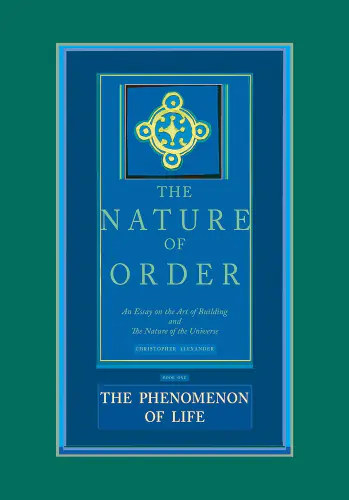
The Phenomenon of Life
The Nature of Order, Volume 1
Christopher Alexander examines why certain built environments possess more “life” than others. Central to his theory is the concept of “centers”—distinct, coherent parts within a larger whole that influence each other’s intensity. He argues that life can be objectively sensed and measured, supported by 15 fundamental geometric properties found in nature and traditional architecture. Alexander contends that these properties, which foster human well-being, have largely vanished in modern design, impacting our connection to built spaces.
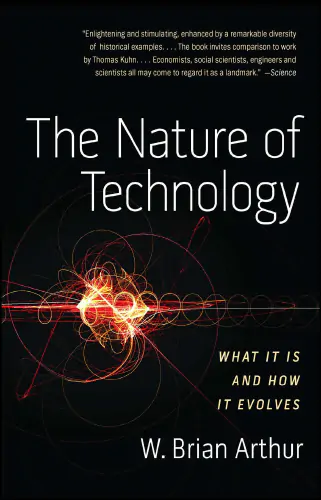
The Nature of Technology
What It Is and How It Evolves
The Nature of Technology reveals technology as a living ecosystem of ideas, where each invention grows from past ones and sparks new possibilities. W. Brian Arthur shows how this self-reinforcing web drives progress, reshapes society, and evolves much like nature itself—messy, unpredictable, and endlessly creative.

The Nature of Things
David Bohm discusses his perspective on theoretical physics and quantum mechanics, including the contradictions between relativity and quantum theory. He explains his theory of the implicate and explicate order to describe the wholeness and interconnectedness of matter. Bohm relates this to consciousness, self-deception in thought, and Krishnamurti's teachings on awareness to transform individual and collective conditioning.
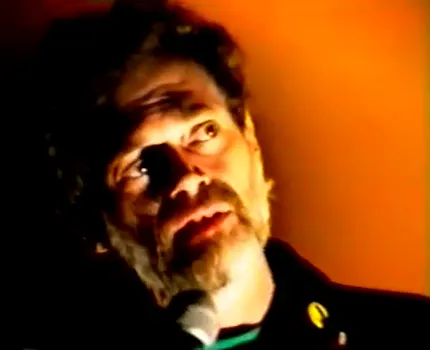
The New Psychedelics
Held at the Ego-Soft event, Terence presented his philosophy and eschatology rap in accompaniment with a rhythmic didgeridoo and bell performance.
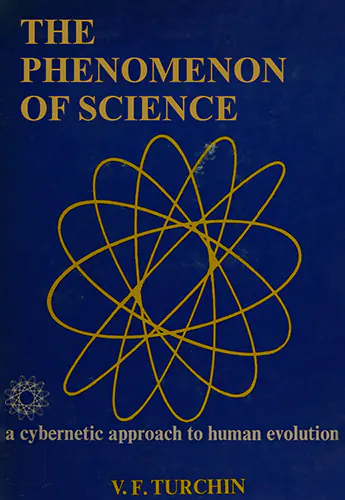
The Phenomenon of Science
A Cybernetic Approach to Human Evolution
Imagine a groundbreaking book that unveils the hidden architecture of intelligence itself. From the humble beginnings of single-cell organisms to the dizzying heights of human culture and science, Valentin Turchin charts the epic journey of cognition. He reveals how each quantum leap in mental prowess—from basic reflexes to abstract reasoning—emerges from a process called “metasystem transitions.” By weaving together cybernetics, evolutionary theory, and the hierarchical nature of mind, Turchin offers a revolutionary perspective on how consciousness evolves. Prepare to see the story of life and thought in an entirely new light.

The Phyletic Structure of the Human Group
Teilhard de Chardin explores the arc of human evolution, tracing humankind's progression from primordial divergence to modern convergence. He argues that we now stand at an equator where further global compression will compel our species to attain unimaginable new heights of consciousness. An eloquent exploration of our place in the cosmos and destiny as thinking beings.

The Place of Technology in a General Biology of Mankind
Teilhard argues that biology and technology are the same thing: technology is simply advanced biology which has reached a minimum threshold of self-awareness, allowing it to harvest and sheperd energy from its environment and utilize it to intelligently organize matter for further evolutionary development.

The Position of Man in Nature and the Significance of Human Socialization
Is there in the universe a main axis of evolution? Pierre Teilhard de Chardin argues for the centrality and progressive direction of life, human thought, and social bonds in cosmic unfolding. His four propositions lead to the bold claim that Christianity drives humanity's spiritual ascent, culminating in a transcendent fulfillment.

The Psychological Conditions of the Unification of Man
Teilhard discusses the objective and subjective conditions necessary for humankind to maintain its passion for unification and progress. Objectively, the universe must be perceived as open and centered towards the future. Subjectively, humanity must develop a heightened sense of the irreversible, the cosmic, and a faith that serves as a driving force for the world's advancement, which he suggests can be found in a properly understood Christianity.
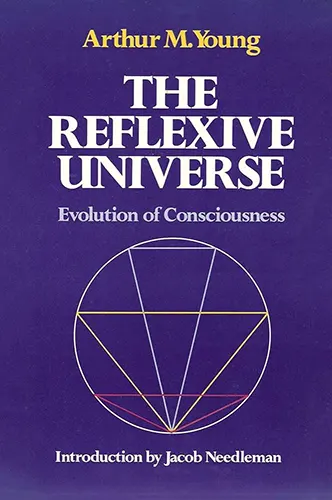
The Reflexive Universe
Evolution of Consciousness
Integrating the findings of modern science with ancient wisdom, this seminal work offers a paradigm for resolving the schism between spirit and matter. Arthur Young’s Theory of Process provides a model for the evolution of consciousness out of light (the quantum of action), offering hope for an age in search of value and meaning.

The Religious Value of Research
Teilhard casts scientific research as humanity’s next evolutionary pulse—our collective mind awakening to shape its own future. He argues that the modern hunger to know and create is nothing less than evolution reflecting on itself, a divine power working through human inquiry. For him, research becomes sacred: the meeting point where faith in God and faith in human potential fuse into a single, world-transforming spiritual force.

The Rise of the Other
“Never has the earth vibrated with more spiritual intensity”—Teilhard de Chardin sees our current global conflicts as growing pains of human evolution. He envisions our increasing interconnectedness not as a threat, but as a path to higher consciousness. As we develop a “sense of man” and universal love, we may transcend our struggles, forming a unified superorganism—the next leap in cosmic evolution.
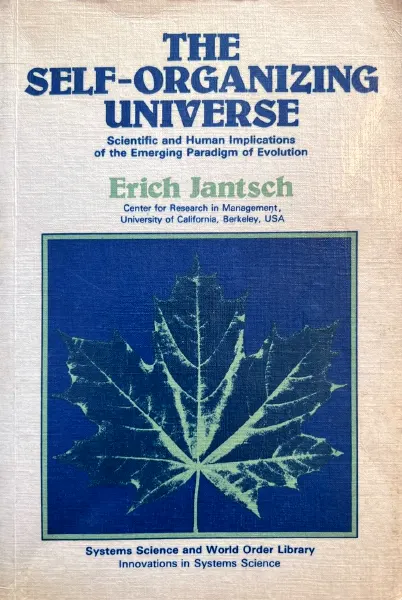
The Self-Organizing Universe
Scientific and Human Implications of the Emerging Paradigm of Evolution
The evolution of the universe—ranging from cosmic and biological to sociocultural evolution—is viewed in terms of the unifying paradigm of self-organization. The contours of this paradigm emerge from the synthesis of a number of important concepts, and provide a scientific foundation to a new world-view which emphasizes process over structure, nonequilibrium over equilibrium, evolution over permanency, and individual creativity over collective stabilization. The book, with its emphasis on the interaction of microstructures with the entire biosphere, ecosystems etc., and on how micro- and macrocosmos mutually create the conditions for their further evolution, provides a comprehensive framework for a deeper understanding of human creativity in a time of transition.

The Sense of Man
Humanity is not a scatter of individuals, but the birth of a single mind—the noosphere. Just as life once ignited from matter, thought now ignites from life. Teilhard says our task is no longer survival alone, but conscious evolution to forge a unified destiny where the universe awakens to itself through us.

The Sense of the Species in Man
Teilhard de Chardin explores humanity’s evolution from instinct-driven animals to self-aware individuals, and now towards a globally interconnected noosphere. He argues that as our planet becomes more crowded, we must develop a “new sense of the species”—a conscious drive towards collective fulfillment and advancement. This involves improving human genetics, scientific discovery, and fostering unity through love and shared purpose, all aimed at humanity’s continued growth and cosmic significance.

The Social Superorganism and its Global Brain
Society can be viewed as a multicellular organism, with individuals in the role of the cells. The network of communication channels connecting individuals then plays the role of a nervous system for this superorganism, i.e. a “global brain.”
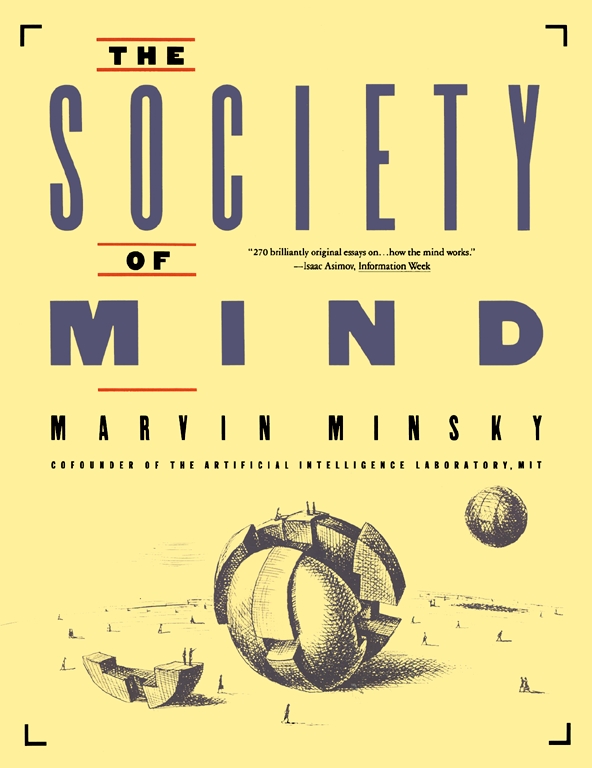
The Society of Mind
Marvin Minsky (one of the fathers of computer science and cofounder of the Artificial Intelligence Laboratory at MIT) gives a revolutionary answer to the age-old question: How does the mind work? Minsky brilliantly portrays the mind as a 'society' of tiny components that are themselves mindless. Mirroring his theory, Minsky boldly casts The Society of Mind as an intellectual puzzle whose pieces are assembled along the way. Each chapter, presented on a self-contained page, corresponds to a piece in the puzzle. As the pages turn, a unified theory of the mind emerges, like a mosaic. Ingenious, amusing, and easy to read, The Society of Mind is an adventure in imagination.

The Spirit of the Earth
Teilhard depicts humanity as the Earth awakening to itself, evolution rising toward ever-greater unity. Love and consciousness converge into a planetary spirit, but this ascent, he insists, cannot endure without religion—our innate need for an absolute that calls us forward. In the universe’s unfolding, God emerges as evolution’s necessary summit and sustaining fire.

The Stuff of the Universe
Gazing upon the island of Saint Helena during his voyage from New York City to the Cape Peninsula, Teilhard de Chardin articulates his vision of human evolution culminating in cosmic unity with the Christ—the ultimate center of consciousness and complexity in the universe.

The Transition from the Biosphere to the Noösphere
Vernadsky explores how human knowledge transforms Earth’s biosphere into the “noosphere,” a new geological state driven by science and culture. He highlights how life, especially human activity, reshapes the planet through energy and innovation, from ancient fire mastery to modern technology. This dynamic interplay between life and Earth reveals a fascinating, ever-evolving story of our planet’s history and humanity’s profound impact on its future.

The Ultimate Unity for Thought is the Society of Minds
This lofty philosophical treatise passionately argues that the pinnacle of thought and being is a divine society of free spirits in fellowship, whose joyful self-realization through mutual service and growth comprises the final purpose of all creation. Our supreme hope is participation in this Community of Minds.

The Universe Enlightened
Harding argues that awakening isn’t private but cosmic: to truly know yourself is to rediscover a living, intelligent universe. Modern science, he claims, quietly supports this ancient vision. When the illusion of a separate self dissolves, the universe itself wakes up as home, alive and coherent.

The Universe in Consciousness
Imagine a world where everything is connected by a single mind: Bernardo Kastrup argues that reality is fundamentally mental, not physical. He suggests that what we perceive as individual consciousness is actually fragments of a universal consciousness. Kastrup challenges the mainstream view of materialism, proposing instead that the mind is the primary substance of the universe. By integrating concepts from psychology, neuroscience, and philosophy, he presents a compelling case for a mental universe, urging us to rethink our understanding of reality.

The Vision of the Past
What it Brings to and Takes Away from Science
Teilhard argues that as science deepens its gaze into both space and time, the cosmos reveals itself not as static, but as becoming—a living genesis. By “thickening” our view of time, we see vast slow waves of change—continents shifting, species evolving, consciousness rising—yet origins blur, reminding us that creation is ongoing, happening now, and ahead.
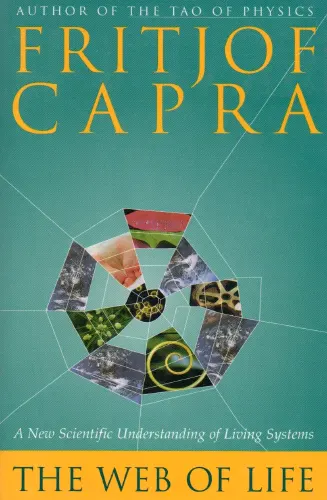
The Web of Life
A New Scientific Understanding of Living Systems
During the past twenty-five years, scientists have challenged conventional views of evolution and the organization of living systems and have developed new theories with revolutionary philosophical and social implications. Fritjof Capra has been at the forefront of this revolution. In The Web of Life, Capra offers a brilliant synthesis of such recent scientific breakthroughs as the theory of complexity, Gaia theory, chaos theory, and other explanations of the properties of organisms, social systems, and ecosystems. Capra's surprising findings stand in stark contrast to accepted paradigms of mechanism and Darwinism and provide an extraordinary new foundation for ecological policies that will allow us to build and sustain communities without diminishing the opportunities for future generations.
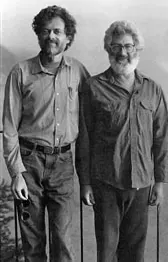
The World Wide Web and the Millennium
Seldom do we have an opportunity to test the accuracy of oracular predictions, but this fascinating conversation between two great thinkers has already proven to be right on target. Speculations include the future evolutionary development of the Internet, whether it is an embryonic intelligence, whether it will merge our minds into a planetary consciousness, or whether it is an alien brain waiting for humanity to cross an evolutionary threshold. Let the bard and the chaos theorist weave an exquisite cybernetic fantasy for you in this evening seminar.
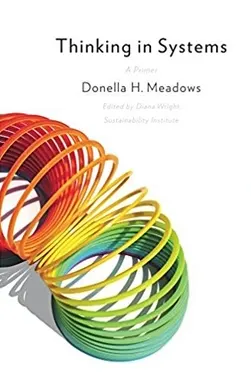
Thinking in Systems
A Primer
Donella Meadows provides an accessible introduction to systems thinking, explaining how to understand complex systems and interact within them more effectively. She describes different types of systems, including physical and social systems, and key system concepts like stocks, flows, feedback loops, leverage points, and delays. Meadows illustrates these ideas through real-world examples and models, and argues that adopting a systems perspective can help address many of society's challenges in areas like sustainability, politics, and business. She aims to teach readers to think broadly about interconnections, change over time, and root causes so they can better understand and influence systems for desired outcomes.

Transformation of Consciousness
Alan discusses the different states of consciousness which the human mind can attain, and some of the chemical compounds which may serve as tools to reach these mental realms.

Truth and Relativity
Philosophy: East and West, Program 14
Through the example of a city, Alan encourages his listeners to reevaluate the definition of their personal identities. Is a person a fully autonomous agent, or might they be a cell in a vast organism? Perhaps it’s necessary to understand both perspectives and recognize that each scale of magnitude depends on all others to manifest as it does.

Understanding the Chaos at History's End
Delivered at the end of McKenna’s first month as scholar-in-residence at Esalen, when he began a new phase in his public speaking career. This weekend workshop provides an early glimpse at Terence’s description of the looming “transcendental object at the end of time,” and the psychedelic insights which led him to become an oracle.

Universalization and Union
An Attempt at Clarification
Teilhard examines the tumultuous state of humanity during World War II, proposing a cosmic perspective on our collective destiny. He argues that beneath the chaos lies a grand process of universal synthesis, driven by increasing complexity and consciousness. He sees the war as a critical point in human evolution, heralding the emergence of a global consciousness. Despite apparent divisions, Teilhard envisions a convergence of ideologies towards a unified, personalized humanity. He urges all to embrace universalism, believing this path will lead to mutual understanding and ultimate unity.

Vertigo at History's Edge
Nothing Comes Unannounced
As we approach history's climax, McKenna heralds the inevitable complexification of existence. He foretells technology and pharmacology's fusion into higher consciousness and collective awakening through boundary dissolution. Still, the human spirit yearns freedom from constraints of belief, non-experience. McKenna beckons: reclaim your mind, body, and world! Destiny awaits our willful shaping. The cosmic hourglass empties; shall we awaken?
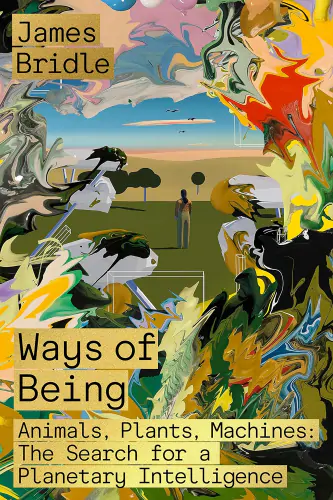
Ways of Being
Animals, Plants, Machines: The Search for a Planetary Intelligence
What does it mean to be intelligent? Is it uniquely human, or shared with other beings—animals, plants, machines? As AI advances, it becomes a strange, even alien force, challenging our place in the world. Meanwhile, other intelligences—natural systems we’ve overlooked—reveal their agency and complexity. In Ways of Being, James Bridle explores these intelligences through biology, physics, and art, urging us to rethink our technologies and societies for a more equitable coexistence with the nonhuman world. Bold and thought-provoking, it’s essential for our survival.

What is Life?
Teilhard says life is not an anomaly, but a universal cosmic force that builds up complexity. He sees it complementing entropy, and the riddle to be solved lies in how they ultimately balance out.

What is the Noosphere?
Planetary Superorganism, Major Evolutionary Transition, and Emergence
Picture Earth evolving a new layer—not of rock or life, but of thought and technology. This “noosphere” is like a planetary brain emerging through our global networks, satellites, and collective intelligence. The paper explores how this mysterious transformation could represent Earth’s next evolutionary leap, potentially leading to planetary consciousness or even contact with other cosmic minds. It’s happening right now, though we’re still figuring out how to guide this planetary metamorphosis.
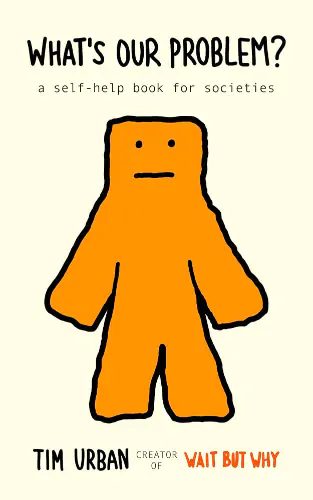
What's Our Problem?
A Self-Help Book for Societies
What's Our Problem? is a deep and expansive analysis of our modern times, in the classic style of Wait But Why, packed with original concepts, sticky metaphors, and 300 drawings. The book provides an entirely new framework and language for thinking and talking about today's complex world. Instead of focusing on the usual left-center-right horizontal political axis, which is all about what we think, the book introduces a vertical axis that explores how we think, as individuals and as groups. Readers will find themselves on a delightful and fascinating journey that will ultimately change the way they see the world around them.

Why Is Anything Conscious?
This paper tackles the hard problem of consciousness by exploring how biological systems evolve to interpret the world. The authors argue that natural selection makes organisms self-organize into systems that feel, learn, and act—starting with basic self-awareness and climbing to complex human-level understanding. Their bold claim? Consciousness isn't an add-on but a deep, essential part of how life adapts to survive.

Why a Science of Mind Implies the Transcendence of Nature
God and Computers: Minds, Machines, and Metaphysics (Part 5)
Have you ever wondered how your brain creates your conscious experience? Francisco Varela explores the intersection of science and spirituality, offering a fresh perspective on the age-old mind-body problem. Drawing inspiration from Buddhist teachings, he argues that our everyday human experience is the key to unlocking the mysteries of consciousness. Varela proposes a research program called neurophenomenology, which aims to bridge the gap between brain activity and subjective experience. Through engaging examples and insightful explanations, he demonstrates how the exploration of consciousness can lead to both scientific advancements and a deeper understanding of ourselves.

Wider Than the Sky
The Phenomenal Gift of Consciousness
How does the firing of neurons give rise to subjective sensations, thoughts, and emotions? How can the disparate domains of mind and body be reconciled? The quest for a scientifically based understanding of consciousness has attracted study and speculation across the ages. In this direct and non-technical discussion of consciousness, Dr. Gerald M. Edelman draws on a lifetime of scientific inquiry into the workings of the brain to formulate answers to the mind-body questions that intrigue every thinking person. Concise and understandable, the book explains pertinent findings of modern neuroscience and describes how consciousness arises in complex brains. Edelman explores the relation of consciousness to causation, to evolution, to the development of the self, and to the origins of feelings, learning, and memory. His analysis of the brain activities underlying consciousness is based on recent remarkable advances in biochemistry, immunology, medical imaging, neuroscience, and evolutionary biology, yet the implications of his book extend farther―beyond the worlds of science and medicine into virtually every area of human inquiry.

World Wide Brain
The Emergence of Global Web Intelligence and How it Will Transform the Human Race
Ben Goertzel says the Internet is evolving towards a “global Web mind”–an emergent, distributed intelligence surpassing human capabilities. This development, grounded in complexity science, could solve AI’s scalability issues and merge humanity with technology. While potentially solving global problems, it raises concerns about individual freedom. Drawing parallels with spiritual concepts like the noösphere and collective unconscious, this evolution is seen as inevitable and transformative. As we nurture this new form of life, we stand at the threshold of a profound shift in human consciousness and global interconnectedness.

Zoological Evolution and Invention
Humanity’s growing interconnection isn’t a social accident, says Teilhard, but evolution becoming self-aware. If life is now reflecting on—and reinventing—itself, then watching human creativity may reveal how new biological forms once emerged. He asks whether “invention,” not just chance and selection, has always nudged life toward greater complexity. In a universe drifting toward the improbable, he wonders: when did consciousness begin steering evolution?